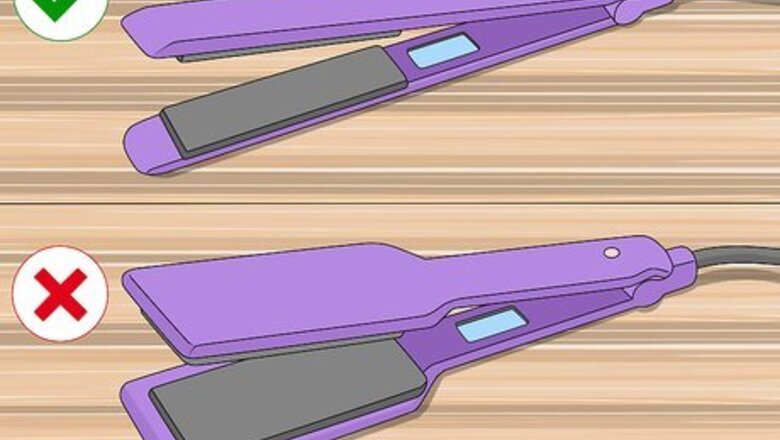
views
X
Research source
[2]
X
Research source
Preparing Your Hair for Straightening
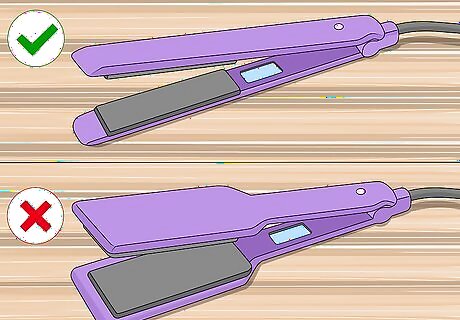
Find the flat iron that's right for you. Different styles of flat iron are intended for different purposes. Hair that is is especially short and/or fine can benefit from the precision offered by a thinner plate flat iron. The thinner-sized plate will be more maneuverable, which can lead to more efficient straightening while decreasing the chances of you getting burned.
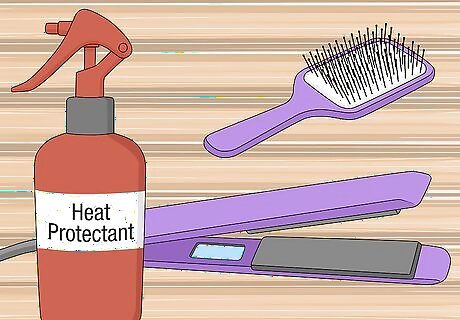
Purchase necessary supplies. If you don't have an appropriate flat iron, you'll need to buy one at a local boutique or borrow one from a friend. You will also need a heat protectant product to prevent your hair from being damaged by excess heat, and brushes to help with styling and blow drying.
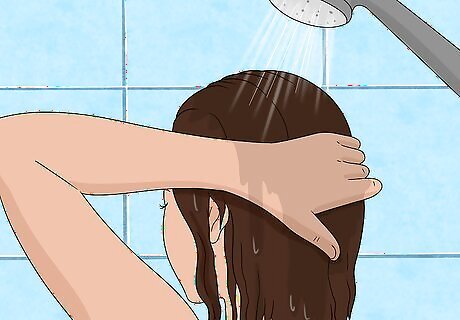
Wash your hair. Oils and any dirtiness that may have accumulated in your hair might cause less-than-desirable results when ironing. Use your normal shampoo to thoroughly wash your hair. Rinse your hair of the shampoo and follow it with a deep conditioner, allowing this to remain in your hair for the time recommended on the label, and then rinse once more.
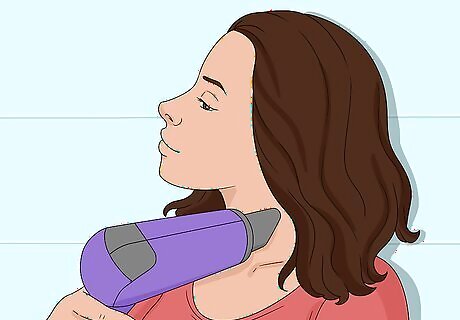
Blow dry your hair completely. You'll want to do this thoroughly until moisture has left your hair entirely. Flat ironing wet hair can lead to damage. While drying your hair, you also have a good opportunity to comb or brush out any tangles or snarls.
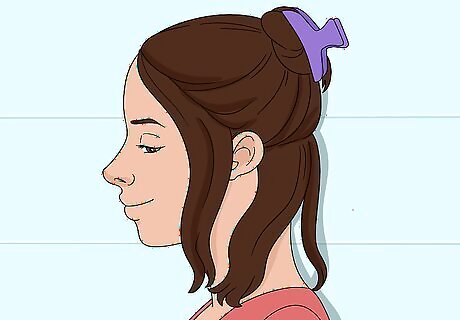
Divide your hair into layers. For short hair, you might only have one or two layers, depending on your hair thickness. Layering your hair is important because it creates even sections of hair, which will be easier for you to manage while ironing. This can also prevent you from accidentally going over a section you've already ironed, which can cause heat damage. Collect the hair you are sectioning off for later atop your head and clip it out of the way while you work on lower layers.
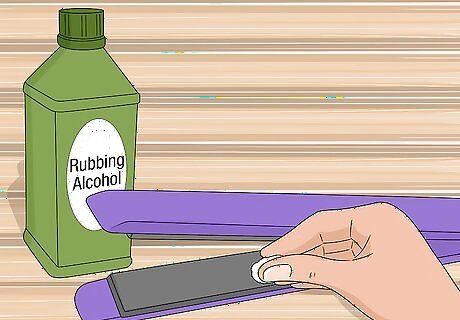
Prepare your flat iron. Inspect the flat iron for dirtiness before use. You can effectively clean your flat iron while it is unplugged and cool with a clean rag dampened with rubbing alcohol. Wipe your plates dry with a fresh cloth and your flat iron should be ready to straighten.
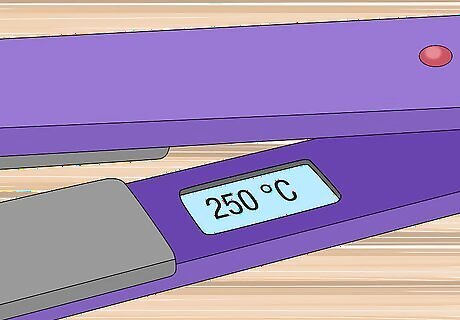
Heat your iron. There should be a few different settings available on your iron. While there is no hard-and-fast rule for temperature, as each persons' hair will respond to the heat of your flat iron differently, the following generally applies: 250–300° for fine or damaged hair. 300–350° for medium/average hair. 350–400° for thick or coarse hair.
Flat Ironing Your Short Hair
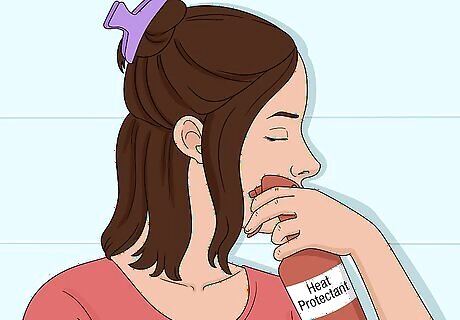
Remember your heat protectant product. You should first consult the label of your product, as your brand of heat protectant may have special instructions. Most heat protectants should be applied to wet hair that has already been deep conditioned, so the a good time to administer this product is after washing your hair.
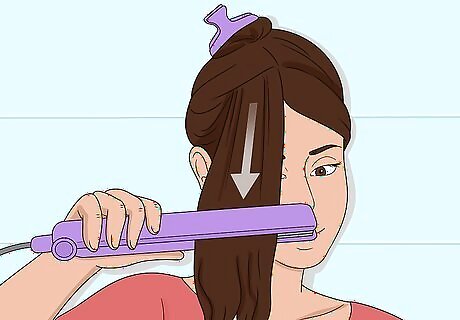
Iron your bangs, if applicable. Bangs are already divided from the hair on the crown and sides of your head and are easy to see, making this a great place for you to start. Work your way from the root to the tip of your hair. Depending on the curliness or waviness of your hair, you may have to run your hair through the iron a few times. If your hair is long enough, consider running a comb through your hair and following it with your straightener.
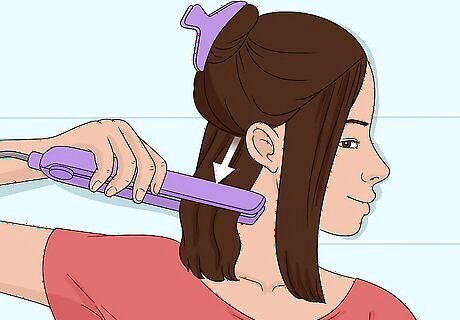
Straighten from bottom layer to top layer in segments. Take your bottom layer in segments and work these from the root of the hair to its end, slowly sliding your flat iron down each length of hair. Repeat this process a few times until you achieve the desired result. Exercise caution when ironing close to your scalp or ears. The heated ends of your flat iron will burn you if you are not careful.
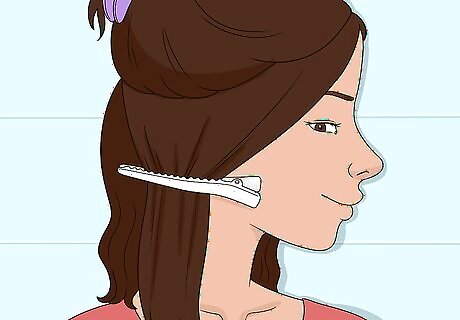
Move finished sections out of your way. You can clip sections of straightened hair aside by using an alligator clip or hair tie. This will make it easier for you to iron each section while minimizing your chances for unnecessary over-ironing.
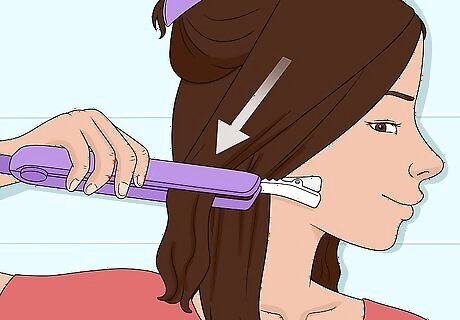
Straighten the sides of your head. You'll likely need to clip the top layers of the hair on the sides of your head out of the way, if you haven't already done so. Start with the bottom layer and in smooth motions, draw your iron steadily through segments of your bottom layer until you are satisfied. Gather finished hair together out of the way and then release the next layer of hair from the unfinished top layer that you clipped aside earlier. Ironing at an angle in front of a mirror can give you a better view of the hair you are working on, allowing you to be more precise when straightening.
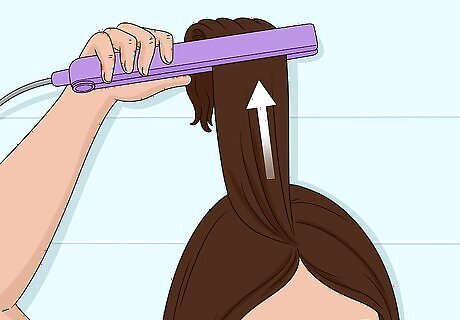
Iron crown-hair vertically for volume. The hair at the top (also called the crown) of your head can be difficult to manage. By pulling your hair upwards toward the ceiling, you'll give your flat iron better access to the roots of the hair there and improve hair volume.
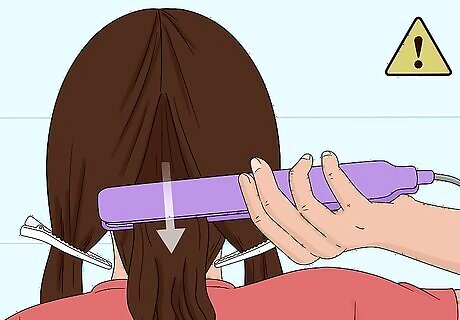
Be patient with the hair at the back of your head. The hair at the back of your head is difficult to see and ironing it can be awkward. Divide hair at the back of your head down the middle vertically, and then pull it to either side of your head. Now you can stand at an angle to a mirror and have a decent view of the hair you are straightening.




















Comments
0 comment